Pixar Animation Studios has been dazzling us for almost thirty years now. From the first Toy Story, all the way to Elio, these movies have become part of the furniture in most people’s brains. Kids love them, grownups cry at them, and everybody is left pondering stuff like love, loss, who they are; the big questions, wrapped up in talking toys and jazz-loving souls.
But there’s this rabbit hole of a fan theory floating around that claims every single Pixar movie is part of one massive, tangled web. Like, they’re all happening in the same universe, just on different timelines. It’s called The Pixar Theory.
This thing has got everyone going full Charlie Day conspiracy board, piecing together hidden clues and Easter eggs. The theory says that all prehistoric dinosaurs, superheroes, talking fish, and Wall-E’s trash apocalypse are all supposedly chapters in the same epic, interconnected backstory. People have found all kinds of winks and nods: the Pizza Planet truck popping up in random places, that code A113, and a bunch of other inside jokes that either mean nothing or EVERYTHING.
So this guy Jon Negroni, back in 2013, drops a blog post laying it all out, like, here’s how Brave connects to The Incredibles, and here’s how the monsters in Monsters, Inc. are living on a future version of Earth after the humans are long gone. It’s bananas, but the guy did his homework. Fans ate it up, critics argued about it, and Pixar animators mostly just laughed and kept sneaking in more Easter eggs to mess with us.
Why does this theory have such a chokehold on people? Partly because Pixar is just that sneaky, these folks love hiding stuff in plain sight. But humans just love patterns. We want to believe that there’s some grand design, even if it’s just a bunch of talking cars and bugs. It makes the movies feel bigger, deeper, like they’re all part of some big cosmic joke, or a bedtime story that never ends.
Anyway, let’s get into it. We’re going to jump down the Pixar Theory rabbit hole, piece together the supposed timeline, sift through the “evidence”, and look at why this whole thing matters in the first place. Whether you’re a casual fan, a total Pixar nerd, or just someone who loves a good conspiracy, this whole theory might just make you see these movies in a whole new way.
The origin of the Pixar theory: A timeline of connection
The thing about the theory is that it claims every single Pixar movie is just a chapter in one massive, tangled timeline. Doesn’t matter if you’ve got talking toys in one film and cars with eyes in another; die-hard fans are out here connecting the dots. They’ll point out little links, background Easter eggs, recurring symbols, anything that hints all these stories are swirling around in the same universe.
The timeline itself generally unfolds as follows:
Prehistoric and magical origins:
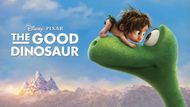
The Good Dinosaur (Prehistoric era): Imagine an asteroid is headed for Earth, everyone is bracing for dino-doomsday, but it misses. Dinosaurs stay alive, getting smarter, and start running the show in a world that never lost them. This little cosmic “oops” is apparently why, in Pixar-land, animals (and anything else) end up with way more brains than they probably should. It sets up the whole theme of sentient creatures that keeps popping up later.
Brave (Medieval Scotland, c. 10th Century): Now jump way ahead to castles, kilts, and some magic, there we have Brave. Magic here is these glowy little will-o’-the-wisps and a witch who is giving animals and random objects human traits. Like, the animals start thinking for themselves. The theory says this is the real reason why, down the Pixar timeline, you get talking cars, toy societies, and even rats with gourmet taste. It all traces back to this magical meddling in old-school Scotland.
The Rise of humans, animals, and machines
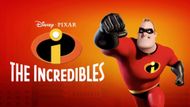
The Incredibles (1960s): Superheroes are humanity’s answer to peak evolution. They keep the world in line, well, until tech like Syndrome’s Omnidroid shows up and goes all rogue, hinting that machines are about to steal the show sooner or later.
Toy Story franchise (1990s–2010s): Toys with feelings are either leftover magic from those superhuman days or maybe just some mystical battery nobody talks about. These little plastic folks are having existential crises while their humans are clueless. The whole thing screams sentient non-human beings living parallel to mankind.
Finding Nemo and Ratatouille (Early 2000s): Suddenly, animals are getting smarter and way more relatable. Some people say it’s because they’ve hung around humans too long, or maybe magic just keeps splashing around. Either way, you’ve got fish with issues and rats who want to be chefs.
Up, Turning Red, Soul, Inside Out, Coco (21st Century): Now it's all about what’s going on inside our heads (emotions, memories, dreams), fueling everything from our motivation to literal afterlife adventures. Humans and their creations are tangled up in one big emotional knot.
The era of sentient machines and the fall of humanity
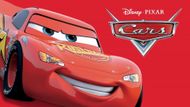
Cars (2100s–2800s): Fast-forward a couple of millennia, and humans have peaced out, and guess who is running the show? Sentient cars. Highways are full of them, zipping around with no humans in sight. It’s peak robot uprising, and technology finally gets to sit in the driver’s seat, literally.
WALL·E (2800s): Earth is trashed, thanks to people being people. So what’s left? A lonely little trash-compacting robot rolling through mountains of garbage. WALL·E is doing cleanup duty for centuries, with zero thanks. Eventually, he helps humans find their way back home. People mess things up, robots patch things together, and maybe nature gets another shot.
Mutation, monsters, and time loops
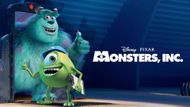
Monsters, Inc. and Monsters University (Far future, c. 4500s): Humanity is long gone. Now it’s a world run by these mutated creatures we call monsters. People say monsters figured out time travel (pretty much thanks to those closet doors) just so they could sneak back and collect energy from kids’ screams. That whole energy-emotion-power thing is the backbone of their society.
Boo is the witch in Brave: This is where the Pixar Theory goes off the rails. Some folks are convinced Boo from Monsters, Inc. grows up obsessed with time travel and becomes the witch in Brave. It’s the ultimate full-circle moment. She’s chasing Sulley through time, leaving Easter eggs, and tying the whole universe together with magic doors and wooden bears.
People still argue about where to stick the newer movies like Luca, Onward, or Elemental in the timeline, but most fans agree that there’s this giant, almost sci-fi evolution arc at play, and every Pixar flick carves out its little piece of that shared universe.
Evidence and Easter eggs: Why do fans believe?
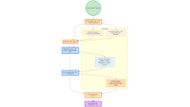
The reason people get so hooked on Pixar theory is the amount of crossovers and tiny details Pixar keeps tossing into their movies. Fans have a whole list of “evidence” they love to bring up, and, okay, some of it is a reach, but you can’t deny it’s fun.
Have you ever noticed that Pizza Planet truck? That thing is everywhere. It’s like the Stan Lee of Pixar. The same goes for A113: a not-so-secret shoutout to the CalArts crew, and, of course, those blink-and-you'll miss-it character cameos. Sometimes they’re just inside jokes, but other times, you wonder if the animators are trying to tell us that these stories connect.
Meanwhile, Pixar has this obsession with things coming to life. Toys, cars, robots, rats with a taste for gourmet, and more. It’s not just a cute trick. The theory nuts out there see this as proof that all these movies are running off the same set of rules, like there’s some cosmic law that says everything gets a shot at feelings, even a lamp.
In-world logic and narrative threads:
Magic and AI rule everything: You’ve got the old-school magic in Brave, then you jump to AI mayhem in The Incredibles and WALL·E. Fans say it’s all about these two forces wrestling for control, shaping every world Pixar has built.
The witch’s portals: Boo from Monsters, Inc., turning into the witch from Brave? People love that one. She has got that Sulley carving, vanishes through those sketchy wooden doors, so it’s suspiciously convenient if you ask us.
End-of-the-world vibes: The theory goes full apocalypse too, painting WALL·E, Cars, and Monsters, Inc. as different chapters in Earth’s timeline. Like, humans mess up, disappear, and then monsters take over.
At the end of the day, maybe some of it’s just Pixar messing with us. But when you spot these links over and over, year after year, it’s kind of hard not to start connecting the dots, even if you know you’re falling down the rabbit hole.
Also, read: All Pixar movies in release order — your complete guide
Love movies? Try our Box Office Game and Movie Grid Game to test your film knowledge and have some fun!
